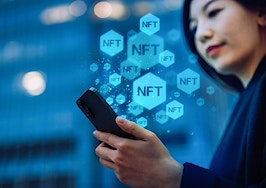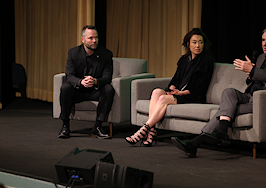With the average cost of an American home soaring to nearly $350K last year — a record increase from 2020 — it’s no wonder real estate investors are looking to buy into new territory, even if that means the property is virtual.
It’s early days for the virtual real estate boom, but already the value of transactions in the metaverse exceeded $500 million in 2021. That’s only expected to grow –– some projections expect it to double to $1 billion this year and $13 trillion by 2030.
But if you’re looking to buy virtual land for a steal, you may be surprised to learn that, like IRL, urban hot spots in the metaverse have soared by as much as 500 percent since Facebook rebranded to Meta and announced it was going all-in on virtual reality.
While you may not have $300K to purchase a private island in a digital world or $450K to become Snoop Dogg’s virtual neighbor, there’s a tangible benefit this new kind of real estate investing brings: the micro-moments spent passively checking in on your virtual land holdings offer an investor education that’s hard to replicate in real life.
The tangible benefits of virtual land
In fact, more than virtual property in alternate realities, what excites me most about the metaverse is its potential to be used to enhance financial literacy.
Investing isn’t typically taught in public school, and the traditional way it’s learned — through dry economic facts — doesn’t resonate with most people. Textbooks and spreadsheets don’t spark emotion or at first glance even relate to the real world. In fact, research has shown asset managers’ products are geared toward men and their needs. That, in part, has led to a gender-gap — only 28 percent of women say they’re comfortable investing their money.
With its immersive visuals and finger-swiping accessibility, the metaverse opens up a new way to teach financial literacy during the in-between moments of waiting for an Uber or an elevator. Think about it: not only can you physically see how many bedrooms the virtual condo you invested in has, but as a digital patron in the metaverse, you can experience the emotional rewards, too.
Seeing the data on how many families your residential condo housed or how many people were employed in the commercial development you funded, you can have a sense of the impact of your dollars.
Investment in particular can be hard for many people to grasp. The stakes can feel high, and the learning curve, frankly, can be intimidating. Compare that to the metaverse, where people have the opportunity to see principles of investment through micro-interactions that mimic real-world experiences. That visual representation and context will give people more insight into what they’re actually doing with their dollars.
Take diversification, for example. Real estate investors can see what it looks like firsthand through a digital representation of their residential and commercial property portfolio. Engaging and interacting with the avatars characterizing their investments is more intuitive than reading a prospectus about faceless stock opportunities.
This isn’t the first time virtual worlds have been used to augment IRL learning. The maker of the wildly popular cross-platform game Fortnite recently secured $2 billion in funding from Sony and the owner of the Lego Group. While the game’s addictiveness has raised eyebrows among teachers (and parents), experts at Stanford University have found it reinforces learning skills by requiring players to hone their collaboration, strategic thinking, spatial understanding and imagination.
Through micro interactions, people can learn the ins and outs of investing and feel more ownership than they might by diverting a few thousand dollars from their bank account into a less interactive and tangible stock.
Don’t YOLO your way into decentralized land
Regardless of your investment knowledge, when it comes to virtual land, a simple real-world rule still applies: don’t invest more than you’re willing to lose.
You may hear of people buying low and selling high, but the reality is the metaverse is still a high-risk, high-return asset class, meaning there will be good investments, but there are no clear winners yet.
Despite its uncharted territory, the metaverse is not so different from real-life investing. Just like when a city is first developed, no one knows where the best parcels of land will be. You can make educated guesses based on proximity to water or districts where people are congregating, but this is still speculation — there are no guarantees.
It strikes me that the metaverse offers us an opportunity to make the most of those opportunities to learn, grow our assets and help build our communities. Virtual property doesn’t have to mimic real estate IRL, but if we want more than the status quo, it’s on us to expand our definition of what’s possible.
Mike Stephenson is co-founder and CEO of addy, which is focused on making real estate investing accessible to everyone. Follow him on LinkedIn.













